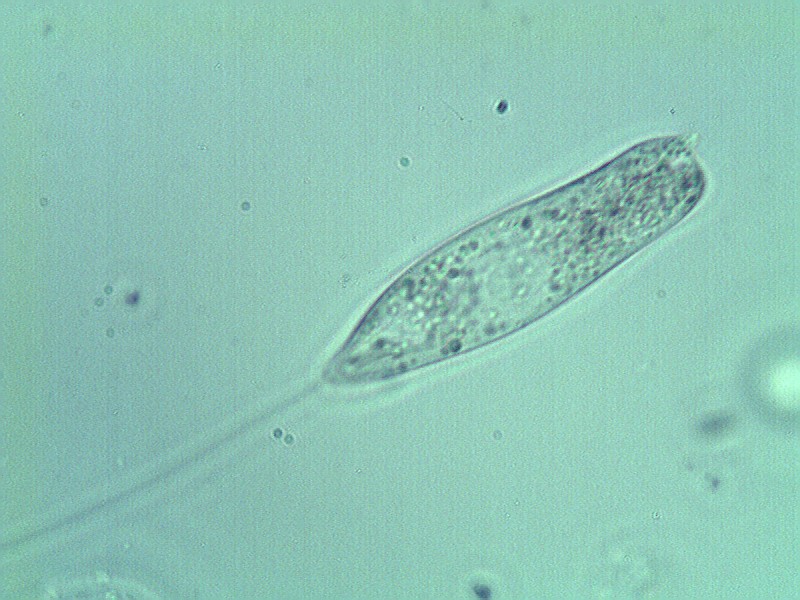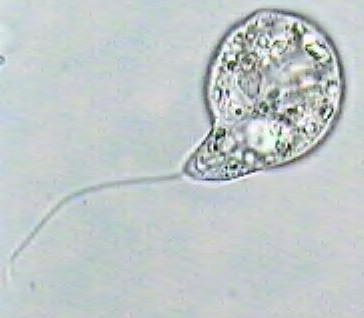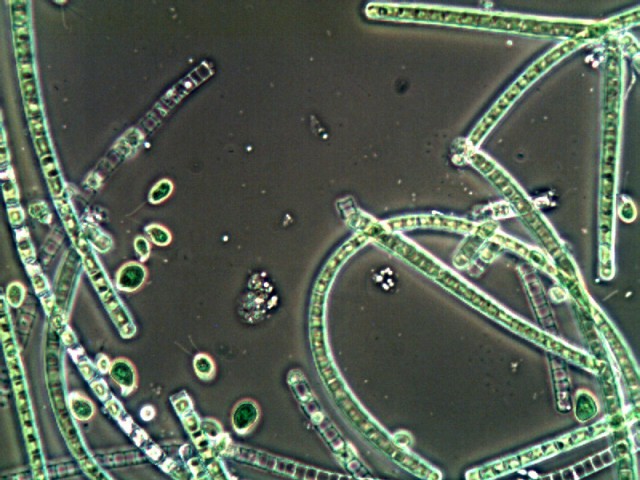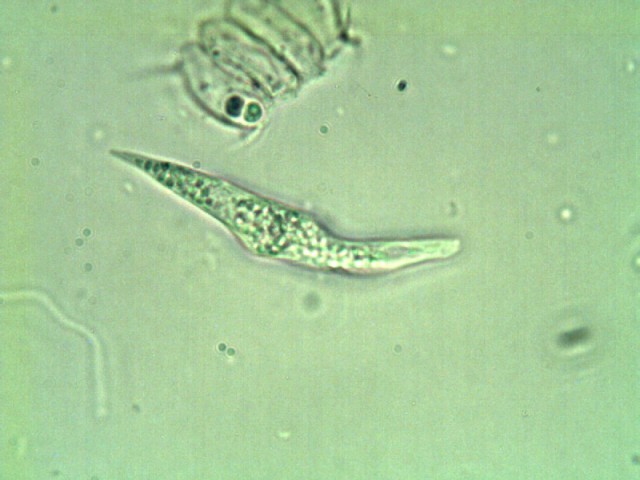Biological Products:
Bioaugmentation products for Wastewater applications in Papermills, Refineries, Chemical, Tanneries, Municipalities, Textiles, Steel, Agriculture, Animal feedlot, Gun Powder plant, Food and Beverage- Dairy Products, Orange Juice factory, Wineries, Cookie factory, Vegetable processing plant, Meat packing, Barbecue Restaurant, Aquaculture, Ornamental Ponds with algae , CAFO, Nursing homes, Military, Campgrounds, Universities, Regulatory agencies, River and Lake remediation
Lab Services:
Filamentous Identification Lab Service. One reason to identify filaments is to determine the filaments characteristics and then determine the type present. If the type is found out, a root cause can usually be associated with a particular filament. If the cause is known, then a correction can be made to alleviate problems. Chlorination is only a quick fix. Without process changes, filaments will grow back after chlorination. Wastewater Biomass Analyses and Cooling Tower Analyses also available
Training Materials:
Training is an integral part of any job. Not everyone is at the same level of training. Many people want beginning concepts and basics. Some need technical information or troubleshooting. Some want equipment, technology or process information. We have developed a full set of Basic training, Advanced training, Filamentous Identification the Easy Way as well as custom training CD's Manuals. We also provide hands-on training classes and soon will have an Online "E-University".
Audits and Consulting:
At Environmental Leverage® Inc., we have a team of experienced individuals who come into your plant with a fresh pair of eyes. The system is checked from influent to effluent. System optimization, equipment efficiency and operational excellence are key components explored. Key Benefits Equipment efficiency Total Cost of Operation reductions Reliability and safety An onsite audit is conducted to examine system parameters, process controls, and current monitor and control procedures. A physical walk-through is conducted, process flow diagrams are examined, previous design criteria are examined and current standard operating procedures are evaluated along with data logs.
|
Flagellates What's New!
We now have a brand new "Higher Life Form videos" in our Training CD list. Check out our new Wastewater Training Materials. We are also in the process of developing new courses for our ""Online University" in order to meet the needs of our global customers that cannot travel to our public classes. WastewaterElearning.com/Elearning
We hope you like the new look of our Higher Life form Identification Pages If you would like more information on bacteria, filaments or higher life forms, you might want to consider purchasing our Wastewater Microbiology Training materials. We also have our lab that can perform a Wastewater Biomass lab analyses of your own MLSS for more information
Flagellates
Identification Flagellates are single-celled protists with one or more flagella, whip-like organelles often used for propulsion. The flagella is used for movement through the liquid. Some flagellates live as colonial entities, while others function as a single cell. Most are free-living organisms, however, a number are parasitic or pathogenic for animals and humans. They multiply by binary fission and some species posses cyst stages. Flagellates range in size from 5-20 µm. Many flagellates are able to feed autotrophically as well as heterotrophically.
There are two primary groups of flagellates. The Peranema belongs to the group which ingests its food. The other group of flagellates is more like bacteria. They don't ingest whole food. They take in food that is already partially "digested." Dinoflagellates are important primary producers (photosynthesizers) in lakes and oceans, yet they can also ingest prey and feed in an animal-like fashion.
Additional Information: Flagellates are protozoa that are found in the group Mastigophora. Some types of flagellates commonly found in wastewater are Euglena, Trigonomonas, and Monas. Recently flagellates were divided into additional categories-plant-like Phytomastigophora and Zoomastigophora.
Environment Like their relatives the amoebae, flagellates are usually present when there are large amounts of soluble food available (high F:M or high BOD). They are found during start up when the sludge is young or after an upset, but will quickly predominate over the amoebae because they are more efficient feeders. They are often found in trickling filter, oxidation ponds, lagoons and activated sludge. Flagellates may have one or two flagella or whips for locomotion. Flagellates can be color-less or green.
Flagellates are one of the few protozoan form present in sludge that is strongly loaded. Their presence may indicate high soluble BOD levels. Flagellates usually are present in very large numbers during initial start- up of a wastewater treatment plant, during recovery from a toxic discharge to the treatment plant, or at low D.O. levels. If flagellates are present as the dominant protozoan group, this could indicate an unstable wastewater environment and a sludge biomass that is very young. Usually found in low MCRT or low HRT for activated sludge systems. Lagoon systems are different and flagellates are often found in lagoons since it is harder to develop an older sludge in a lagoon with high flows.
If the biomass is really old and rotifers and nematodes are usually present, and all of a sudden large numbers of flagellates show up, check to see if a sudden spike of BOD has occurred. Adjustments to RAS and wasting may need to be made in order to handle the sudden increase in BOD. Addition of biological products can also help overcome sudden spikes in BOD to help recover quicker and reduce changes or BOD or TSS permit violations.
How to find them: Microscopic examination of a wet mount. Some of the larger amoebae can be seen at 40-100x and 200x. Sometimes there may be tons of really small flagellates that require the use of 400x or even 1000x in order to clearly see them. This usually happens when a sudden spike of BOD has happened.
It depends upon what the rest of the biomass looks like. If the floc is small, weak, dispersed, you may have a very young sludge age. Typically the presence of flagellates, similar to amoebae indicates a high loading of food vs. the amount of biomass available to eat the organics. Flagellates possess one advantage over their amoeboid relatives in that they can swim. Therefore, enabling them to invade and adapt to a wider range of environments unsuitable for other amoebae. Usually, this means that the sludge is a bit older than if only amoebae are present and there are probably less single celled bacteria swimming around.
It may mean the sludge is young if the floc is clear, dispersed and weak,
or if you have had rotifers in the past and were old, it may mean a recent
high loading of BOD that is forcing the sludge age to a younger age. Usually
you can expect high solids in the effluent and higher BOD levels if
flagellates are present in significant numbers. Daily microscopic analyses
is helpful in documenting where you are today, where you have changed since
the previous day and how to react to changes proactively as opposed to when
they have become critical! What should I do if there is a
significant change in my higher life forms and all of a sudden there is an
increase in flagellates?
You might want to adjust your wasting or RAS levels. Some plants add
bioaugmentation products in cases of higher loadings. You might need to
slightly increase the dosage of product. If using micronutrients, adjust
these levels also if the loading is significant.
For more information on Higher Life Form Identification More photos to come. . .
If you need more information on our Filamentous Identification the Easy Way Training CD or on Internet training on Filamentous bacteria, causes and controls. How and why on Wastewater Biomass Analyses
|

 When
trying to determine species, stick to the basics, and focus on the causes
and controls of the higher life forms present. The main point of any
wastewater biomass identification is not
to get a PhD, but to fix your plant!
When
trying to determine species, stick to the basics, and focus on the causes
and controls of the higher life forms present. The main point of any
wastewater biomass identification is not
to get a PhD, but to fix your plant!
 What
does it mean when I see an increase in flagellates in my system?
What
does it mean when I see an increase in flagellates in my system? 

